

 The South African
The South African
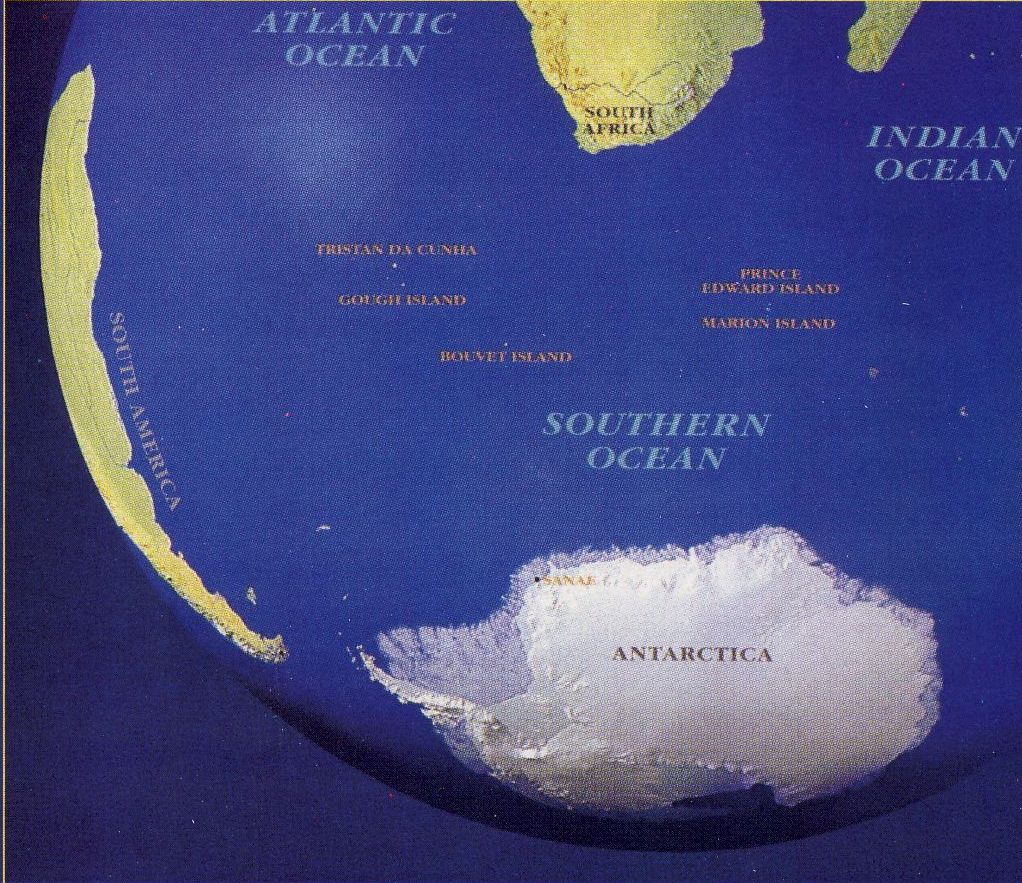
The islands
Marion and Prince Edward Islands, which were first discovered in 1663, are situated 1 141 miles (1 836km) south-east of Cape Town in the Southern Indian Ocean and located at 46° 51' 34" South 37° 51' 32" East. Marion Island is 19km long by 12km wide, and the island covers an area of 316 square miles. Marion is the higher of the two islands, with State President Peak, its highest point at 1 230 metres, permanently covered in snow. Vegetation is limited to lichen, mosses and ferns, and the terrain is very soggy, due to the abundant snow and rain throughout the year. No trees or shrubs are to be found on the island; even hardy types introduced have not survived due to the persistent, strong winds, which are commonly termed the 'roaring forties'. Fine cloudless sunny days are rare, and the average temperatures fall below zero degrees Celsius in winter. In short, while the island is an ideal site for a weather station, it is not so for its inhabitants!
After the Second World War, Britain and South Africa agreed that the Union should annex the Prince Edward island group, then a British possession. The Union Prime Minister, General J C Smuts, ordered the South African Navy to annex the island, dubbed Operation Snoektown and, on the Sunday before Christmas 1947, the SAS Transvaal left Table Bay, Cape Town. Marion Island was reached on Christmas Day, but, because of bad weather, Commander John Fairbairn could not hoist the national flag until 29 December 1947. By February 1948, a meteorological station had been established on Marion Island and, ever since, it has provided a continuous weather forecast service to South Africa. Meteorologists and technicians man the station throughout the year.
The inaugural flight
The delivery of the capable Avro Shackleton Mk III maritime patrol aircraft to the South African Air Force (SAAF) in 1957 opened up new possibilities as far as long-range maritime patrol sorties were concerned. Its predecessor, the Short Sunderland only just lacked the safe range capabilities to make a flight to Marion Island from its base in the Union. Authorization for the first Shackleton flight to Marion Island was issued on 12 March 1958. The purpose of this mission was to provide exposure to the flight-crews of 35 Squadron in the planning and execution of such a long-range flight over water. Navigation, communication and meteorological phenomena of the barren southern ocean had to be taken into account on the flight.
The flight coincided with the visit of the South African Navy ship, SAS Natal, to Marion Island, which, at the time of the flight, would be halfway en route to the island and would therefore act as a rescue and radio picket ship. In fact, the safety requirements of the time necessitated the availability of such a suitable vessel in the area for the period of the flight.
Two aircraft were prepared. Shackleton 1717 was selected for the flight itself and another Shackleton, with rescue equipment, would act as the air-sea rescue aircraft on standby.
The aircrew selected consisted of the then Officer Commanding, 35 Squadron, Commandant M J 'Thys' Uys (pilot), Captain J H Naude (co-pilot), Lieutenants L G Engelbrecht and C de Swardt, L/Airmechanics H R Langford, D H Sheasby and H van Reenen, Air Mechanic RF Albrecht, Air Sergeant W F Ford (flight engineer), and Air Corporal E N van Zyl (flight engineer). Mr A B Crawford from the South African Weather Bureau accompanied the flight as an observer.
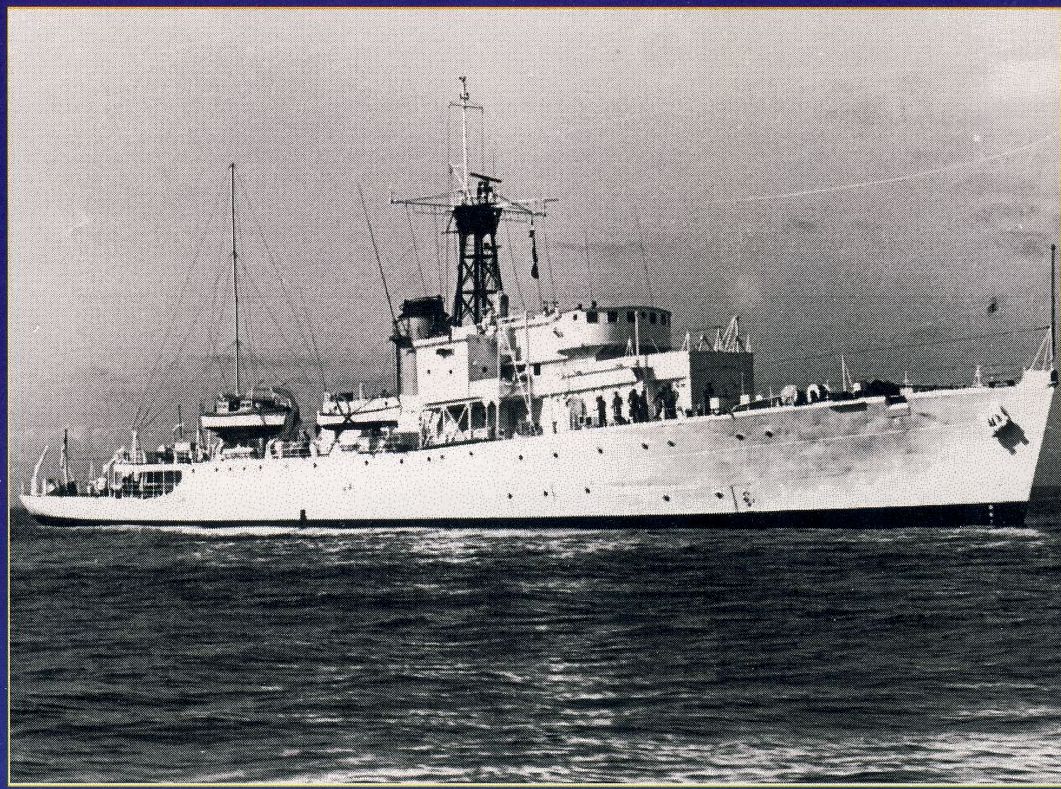
The selected crew were thoroughly briefed on the use of pressure pattern navigation and possible weather conditions anticipated en route to Marion Island. A detailed fuel consumption graph was prepared for the flight, based on data collected from previous long-range Shackleton flights. Possible diversion to Port Eiizabeth, being 250 miles closer, in case of engine failure was considered with various headwind components added to the list of contingencies. To enable accurate flight planning, weather reports were obtained eight and four hours prior to take-off, with the weather station on Marion Island instructed to notify the flight immediately of any change in weather.
Topped up with 4 168 gallons of fuel and weighing in at a hefty 936 455 pounds, Shackleton 1717 departed from D F Malan Airport, Cape Town, at 01.08 on 22 March 1958. A water/methanol assisted take-off was performed and, with the equipment tests successfully done, a south-easterly course was set for Marion Island at an altitude of 2 000 feet. Astro-navigation was successfully employed through most of the flight, although between 05.00 and 08.10 overcast conditions hampered this practice with low cloud at sea level also restricting the use of drift measurements. The use of pressure pattern navigation was, however, available as an alternative method of navigation throughout.
Halfway to Marion Island, the Shackleton reached SAS Natal underway and radio contact was successfully established with the SA Navy vessel. Following the daunting first passage, the crew was deeply relieved to catch first sight of the sun rising over the port wing of the Shackleton. Although storm clouds could be observed in the distant west, the immediate route to Marion Island was clear.
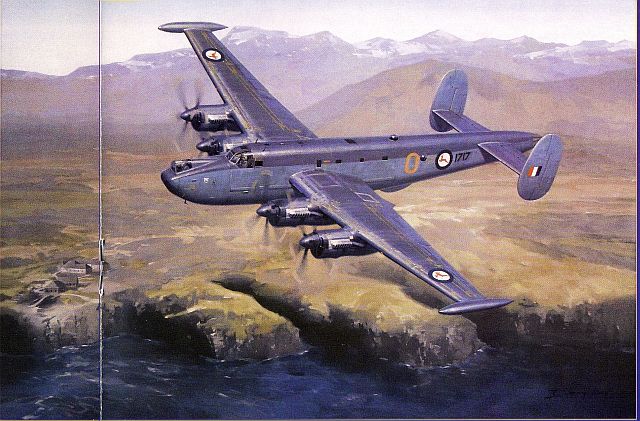
At 07.40 the islands were visually observed and twenty minutes later the Shackleton reached Marion Island, approaching it from the north and descending from its operating altitude of 2 000 feet. The aircraft circled both Marion and Prince Edward islands and remained in orbit at 800 feet for almost 30 minutes. Radio contact was established with the excited Marion Island residents and animated messages of good wishes were exchanged between the South Africans. Various vertical and oblique photos were taken of Marion Island and the South African weather station from inside the aircraft. At 08.32 Cmdt Uys said their last good-byes and made the final pass before turning for Air Force Base Ysterplaat back in Cape Town.
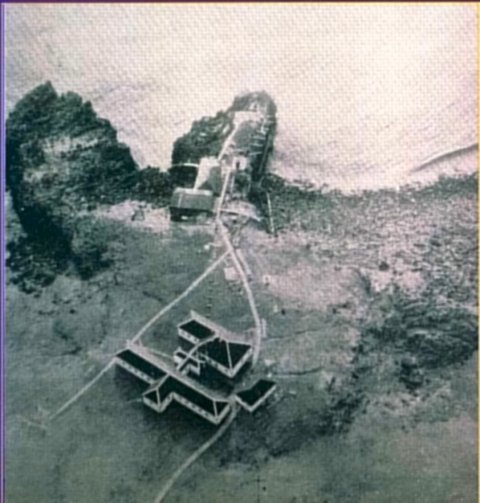
The daylight weather eased the pressure somewhat and the return flight was of routine nature, although the radio altimeter became unserviceable, which hampered further detailed weather observation. Radio contact was again established with the SAS Natal and, at 16.10, the Shackleton touched down safely at Ysterplaat, after a 15.04 hour flight. A total of 2 426 miles had been flown, using 3 078 gallons of fuel, leaving 1 090 gallons in the tanks of the Shackleton when the mighty Rolls-Royce Griffon engines were finally shutdown.
Subsequent flights
Barely a week later, on 28 March 1958 a second flight was made to the distant South African islands. A third only followed some time later on 5 July 1960, when Cmdt J N Robbs and crew in Shackleton 1722 made a supply drop by canister on Marion Island Weather Station. Incidentally, 1717 was the Search and Rescue aircraft on standby at Port Elizabeth on this occasion.
In subsequent years, the Shackletons of 35 Squadron and the C130B Hercules transport aircraft of 28 Squadron have carried out occasional emergency supply drops on the islands, the last known SAAF fixed wing flight to the islands being made by a Boeing 707 of 60 Squadron in 1996. South African Air Force helicopters of 22 Squadron, aboard ships of the South African Navy and Department of Transport vessels RSA and SA Agulhas have been frequent visitors to Marion Island through the years.
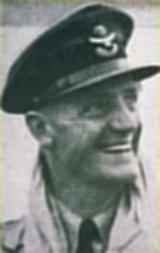
Matthys Johannes Uys was born in Vrede in the Orange Free State on 22 March 1911. He matriculated at Grey College, Bloemfontein, in 1928 and studied at Glen Agricultural College in 1930. He farmed in the Harrismith district until 1935. From 1930 to 1936 he trained as a civilian pilot with the Johannesburg Light Plane Club and qualified for a 'B' Licence. During 1937 he joined the Transvaal Air Training Squadron and attended several military courses. He qualified for wings in the South African Air Force on 2 May 1939 and was appointed in the Reserve of flying officers as a second lieutenant.
With the outbreak of the Second World War in September 1939, Lieutenant Uys was posted to 15 Squadron in Cape Town. During the war he served with a number of SAAF units and won particular renown while serving on maritime operations. In December 1939 he was the co-pilot of the Junkers JU86 which discovered the German ship, SS Watussi, south of Cape Point. The most publicised of events was probably the part he played in the incredible rescue of stranded survivors of the ill-fated ship, the Dunedin Star, along the forbidding Skeleton Coast of South West Africa during December 1942. He served as flight and squadron commander in Madagascar (36 Flight), North Africa, Malta, Italy and France (27 Squadron). By the end of the war, Thys Uys had attained the temporary war substantive rank of lieutenant-colonel and earned the Air Force Cross and Bar. Lt Col Uys accumulated most of his 3 043 wartime hours flying the Ventura aircraft, but he also flew the Junkers JU86, JU52, Anson, Oxford, Hudson, Lodestar, Maryland, Boston, Baltimore, Beaufort, Catalina, Wellington and Warwick V during this time.
With the cessation of hostilities, Thys Uys applied for commission in the permanent force of the SAAF. He was successfully appointed and served as pilot in 28 Squadron, Squadron Commander, 21 Squadron, and Operations Officer, 2 Squadron in Korea, and was awarded the Korean Ulchi and American Bronze Star. By 1955 he had risen to the rank of commandant (lieutenant-colonel) and was transferred to 35 Squadron at Air Force Station Congella, .flying the Sunderland flying boat. Commandant Uys completed a five-month Shackleton conversion course in the United Kingdom and ferried the first Shackleton Mk III to the Union on 18 August 1957. The next day, he was appointed as the Officer Commanding, 35 Squadron, Ysterplaat, a position he held with distinction with the introduction of the new Shackleton aircraft into SAAF service. By the time Commandant Uys was transferred to Maritime Group HQ in 1960, he was the oldest serving and current active pilot in the South African Air Force. Promotions to the ranks of colonel and brigadier followed in 1961 and 1961 respectively. He was Senior Air Staff Officer at Defence Headquarters at the time of his untimely death on 24 November 1964. Brigadier Uys was awarded the Southern Cross Medal in 1960 in honour of his influential leadership in establishing the Shackleton and 35 Squadron as an effective force in maritime operations.
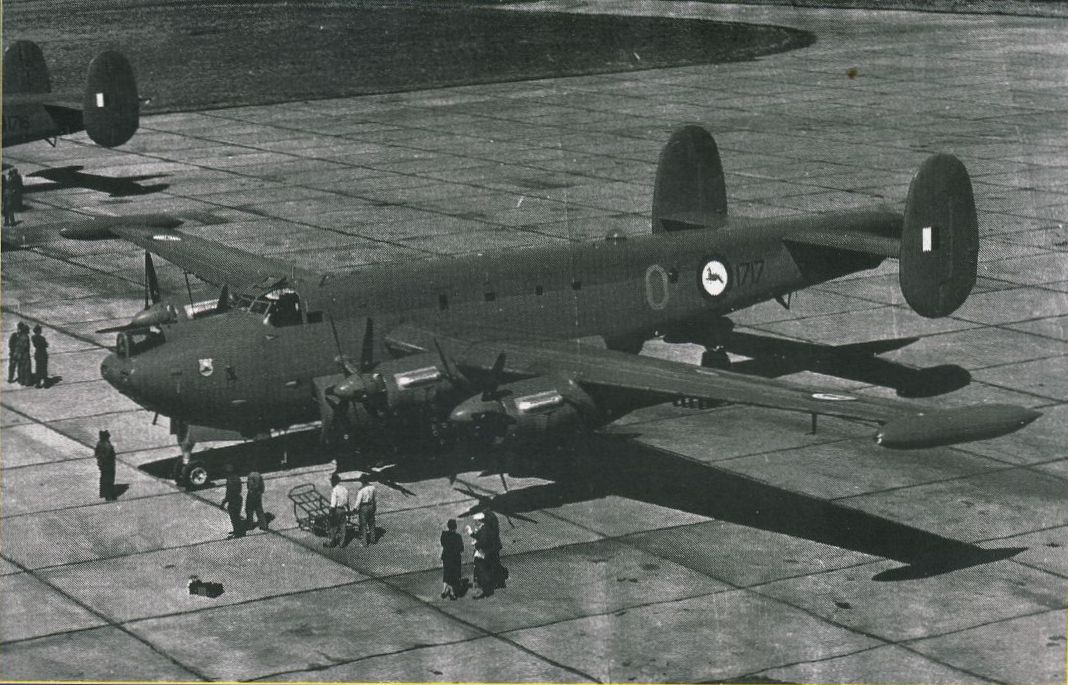
Shackleton Mk III 1717
This aircraft was the second of eight Shackleton Mk III aircraft delivered to the South African Air Force in the late 1950s, replacing the Sunderland flying boat. Shackleton 1717 was first flown on 6 May 1957 and officially accepted by the South African Air Force on 16 May 1957 in 35 Squadron markings and coded 'O'. She was ferried to RAF St Mawgan on 21 May 1957 for work-up exercises and, on 13 August 1957, departed for South Africa in the company of Shackletons 1716 and 1718, arriving on 18 August 1957.
During 1968 she was modified to a Phase II standard that involved electronics and armaments modifications. The replacement of the Shackleton with more modern maritime patrol aircraft having been thwarted by the international arms embargo, the South African Air Force embarked on a re-sparring programme to extend the service life of its fleet to some extent. Shackleton 1716 was the first to be re-sparred between 1973 and April 1976, with Shackleton 1717 following the programme between September 1975 and October 1977. These two aircraft were, in fact, the only two in the fleet that underwent this modification.
Shackleton 1717 was eventually withdrawn from service in 1984 and stored in the open at Air Force Base Ysterplaat for some time. In October 1987, she was dismantled and dispatched by sea to Durban and then by road to Midmar Dam for display in the Natal Parks Board Museum. Following the closure of the Midlands Historic Village, 1717 was sold by auction to a businessman from Stanger in KwaZulu-Natal, where the aircraft was eventually scrapped.
Acknowledgements
Department of Defence Archives (Documentation Centre)
South African Air Force Museum
The Shackleton Association (United Kingdom)
Bibliography
Department of Defence Archives Pretoria: Maritime Air Command Group 1, Box 15, File 35 Sqn/42/10/Air. 'Verslag oor Langafstand Vlug na Marion Eiland 22 Maart 1958' and Personnel File, P22132 Brig M J Uys.
Hänel, C & Chown, S, An introductory guide to the Marion and Prince Edward Island - 50 years after annexation (Department of Environmental Affairs and Tourism, Pretoria).
Standard Encyclopedia of Southern Africa, Volume 7 (Nasou Limited), pp 204-208.
Uys, T, 'Die eerste vlug na Marion-Eiland', in Commando, July 1958, pp12-14.
Return to Journal Index OR Society's Home page
South African Military History Society / scribe@samilitaryhistory.org